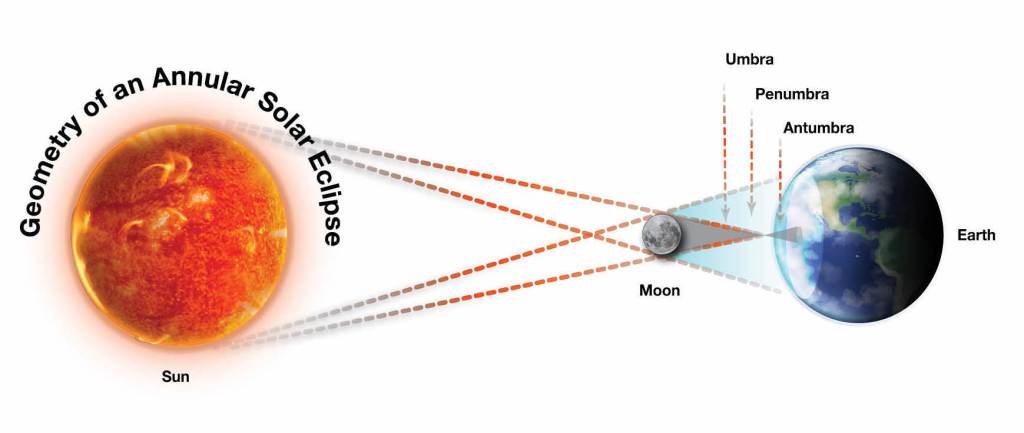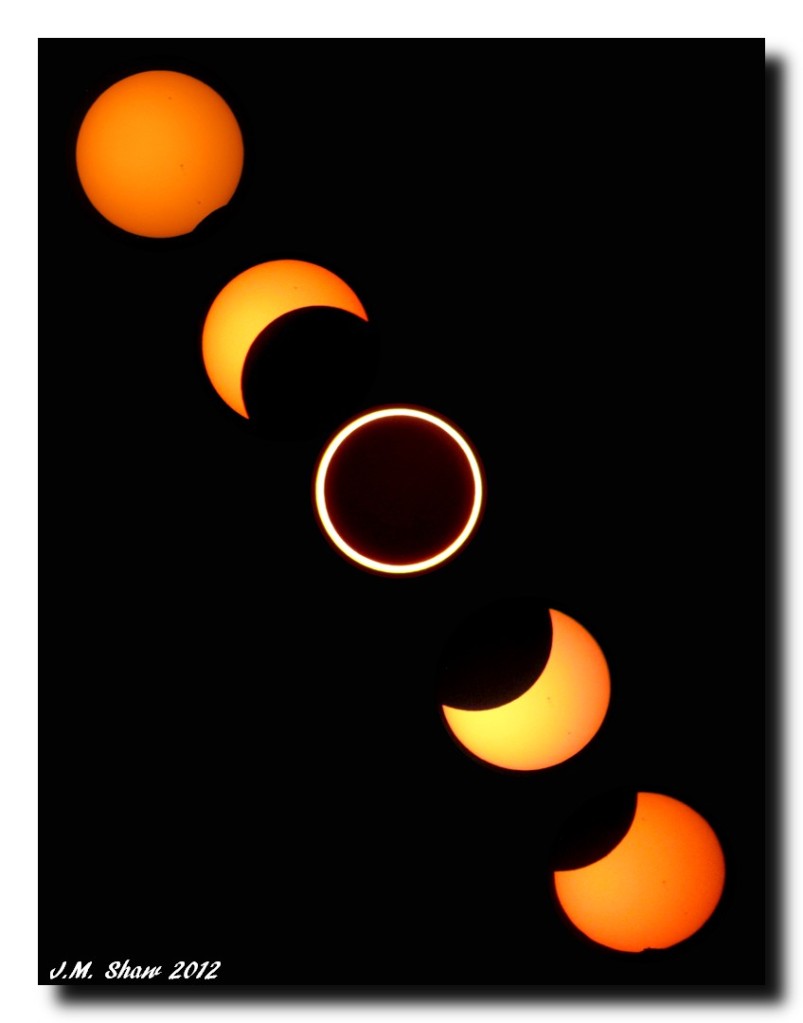If you happen to be around the Four Corners area on October 14th, make sure to have your solar eclipse glasses with you. After that day, you will be able to tell your friends that you saw an eclipse from four different states! An annular solar eclipse will grace our skies that morning, with the full eclipse beginning around 9:30 MST and lasting for just under 5 minutes. You may encounter this path of totality along a swath of the United States covering from the coast of Oregon to South Texas on that day.

An annular eclipse is a type of solar eclipse, where the moon is directly between the Earth and Sun. When viewing a total solar eclipse, the moon will completely cover the disk of the sun, whereas an annular eclipse only covers the center of the Sun, leaving a slim ring of light visible around the Moon. This halo is the annulus, from the Latin meaning “little ring”, and mathematically is defined as the area between two concentric circles. This “little ring” is also where we get the word annual, for the circular nature of the yearly calendar.

The reason we have both total and annular eclipses is due to the non-circular nature of the universe. Seemingly a contradiction to all of this talk of rings and circles, objects in space are governed by the forces of gravity, and orbit in ellipses rather than true circles. At some points in the Moon’s orbit, it is closer to the Earth, at which time we experience Supermoons like we did in August. This closest part of the Moon’s – or any other object’s – orbit is known as perigee. At other times, the ovular orbit takes the orbiting body further from the primary body, and this more distant point is called apogee. Likewise, when the moon is at apogee during a solar eclipse, the apparent diameter of the Moon as viewed from Earth is not sufficient to fully cover the Sun, giving us a “ring of fire” eclipse that is quite the sight to behold.

Whether total or annular, a solar eclipse happens about twice per year on Earth, though with more than 70% of Earth’s surface covered by water, they are not always visible from terra firma. In addition, the rotation of the Earth means that these eclipses could happen on any continent, and so are unique events when able to be seen locally. The path of the annular eclipse is around 120 miles wide in that track across the Western United States, however a viewer hundreds of miles away can still experience a partial eclipse. Here in Central Yavapai County, we will see approximately 82% coverage of the Sun’s face over the course of the morning.
AND DON’T FORGET YOUR SOLAR GLASSES FOR SAFE VIEWING!
